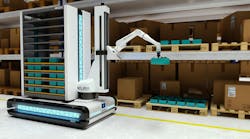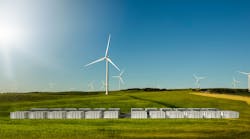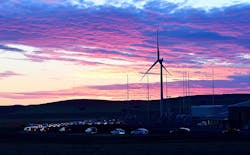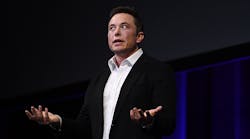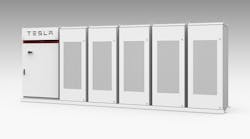In April of 2015, Tesla CEO Elon Musk unveiled the Powerpack, infinitely scalable 100-kWh Lithium Ion storage battery system. He talked about how a network of these connected to renewable energy sources could power the world cleanly and cheaply someday.
On Dec. 1 in Southern Australia, Tesla activated its 100MW/ 129 MWh Powerpack system connected to the Neoen-run, 99-turbine Hornsdale Wind Farm, making it the world's largest lithium-ion battery. It can supply 30,000 homes with about an hour's worth of power.
The region derives 40% of its power form wind, but blackouts have been a common occurrence. Last September, a storm left 1.7 million residents without power. After a string of blackouts this summer, Elon Musk channeled Phileas Fogg to guarantee Tesla could build the system in less than 100 days.
It's estimated that the cost was $38 million. Previously, Tesla built a 20MW/ 80MWh system in California in about six months.
With the scale and speed Tesla has achieved in two years, his initial announcement about disrupting energy industry seems all-together achievable.
"Our goal is to fundamentally change the way the world uses energy at the extreme scale," Musk said at the time. "We're talking at the terawatt scale."
Musk envisioned a network of solar cells feeding these batteries for a constant flow of power that would free the world from fossil fuel dependence.
Australian Prime Minister Malcolm Turnbull had been critical of Australia's renewable push over coal because unlike the old British Empire, it not always sunny Down Under.
"If you want it to replace coal-fired power with lots of renewables, it would dawn on you, you would think, with a moment's thought, that the sun doesn't shine all the time," Turnbull said.
Having a massive reserve battery, though, is just the thing to ensure during shortfalls Australians can run their A/C units or power industry. The blackouts cost businesses an estimated $278 million.
"The battery will bring essential grid stability by providing a fast injection of power," explains Franck Woitiez, Neoen Australia's managing director. "But it will not solve the problem of blackouts on its own."








